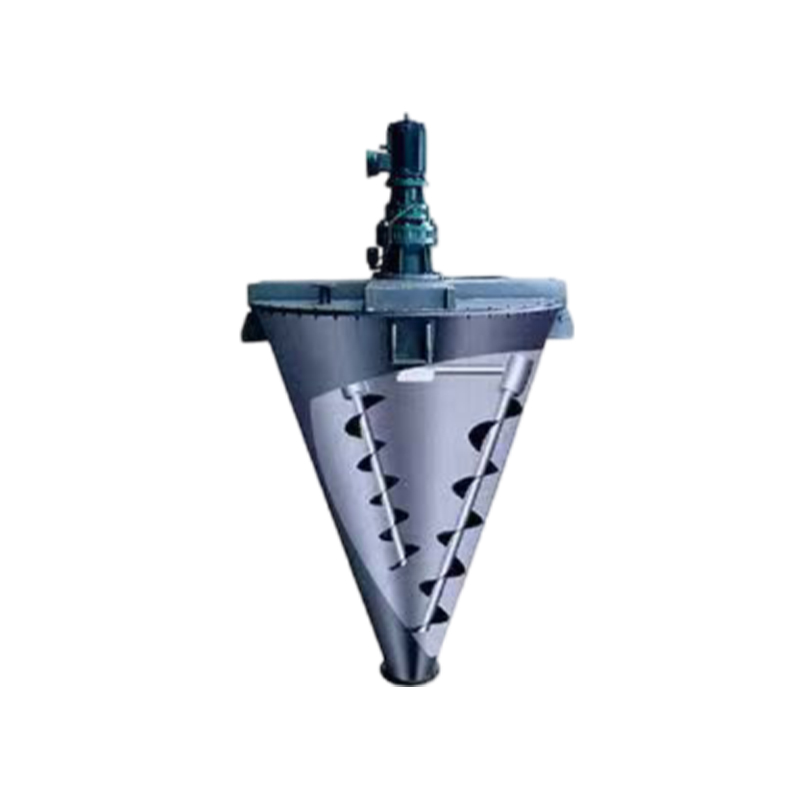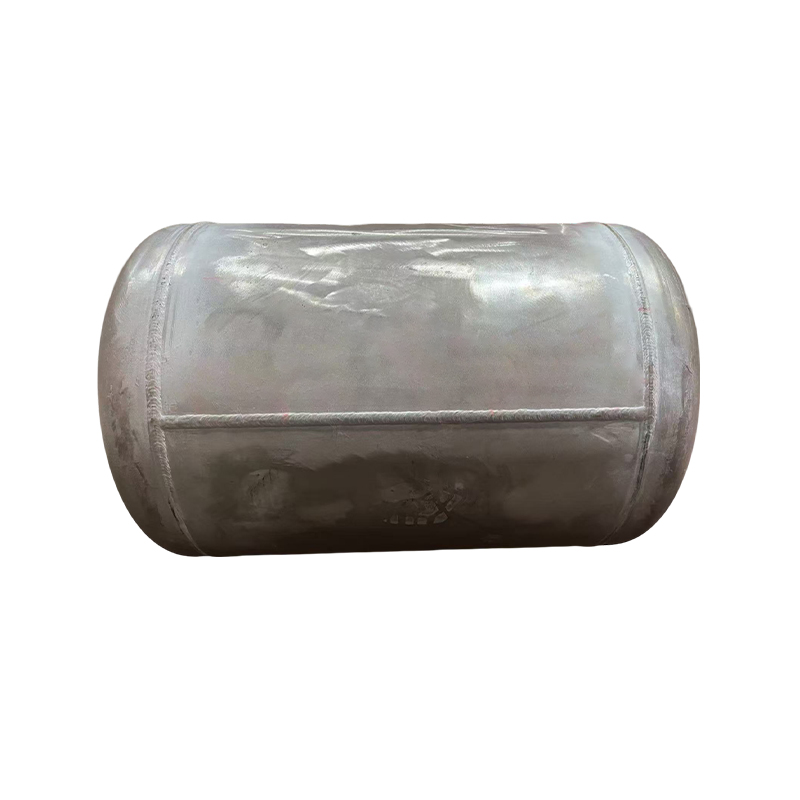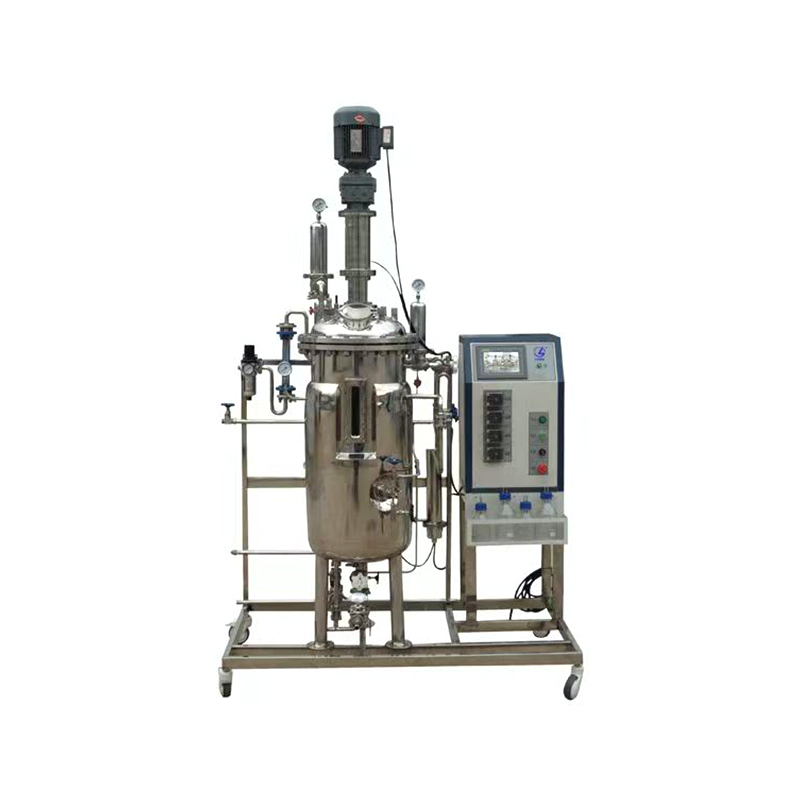How do fermentation tanks precisely control dissolved oxygen (DO) concentration to meet the metabolic needs of aerobic microorganisms at different growth stages?
Release Time : 2025-10-30
As the core equipment for industrial microbial fermentation, fermentation tanks play an irreplaceable role in dairy products, biopharmaceuticals, and fine chemicals. For aerobic microorganisms, oxygen is not only the electron acceptor for their respiratory metabolism but also a key factor in synthesizing cellular substances and producing target metabolites. The level of dissolved oxygen directly affects the growth rate, metabolic pathways, and product yield of microorganisms. Excessively high or low DO values can lead to decreased cell activity, byproduct accumulation, or even fermentation failure. Therefore, modern fermentation tanks utilize a series of sophisticated systems working in tandem to achieve dynamic and precise control of dissolved oxygen concentration, meeting the differentiated needs of microorganisms at different growth stages.
1. Dynamic Changes in Microbial Growth Stages and Dissolved Oxygen Requirements
The fermentation process of aerobic microorganisms typically consists of four stages: lag phase, logarithmic growth phase, stationary phase, and death phase. During the lag phase, the cells adapt to the new environment, resulting in low oxygen consumption. Entering the logarithmic growth phase, rapid cell division and vigorous metabolism lead to a sharp increase in oxygen demand, making this a critical period for dissolved oxygen (DO) control. During the stationary phase, metabolism stabilizes, and oxygen consumption decreases. In the death phase, cell autolysis further reduces oxygen consumption. The fermentation tank must adjust its oxygen supply strategy in real time based on these dynamic changes to avoid insufficient oxygen leading to anaerobic metabolism, or excessive oxygen causing energy waste and oxidative damage.
2. Ventilation System: The Core Channel for Oxygen Input
The fermentation tank introduces sterile air into the tank through air distributors at the top or bottom, which is the primary source of dissolved oxygen. After being sterilized by a high-efficiency filter, the air enters the tank, forming microbubbles that increase the gas-liquid contact area and promote oxygen mass transfer to the liquid phase. Modern fermentation tanks can automatically adjust the airflow based on DO sensor feedback, increasing the air supply during the logarithmic growth phase to meet high oxygen demand, and appropriately reducing it during other phases to achieve energy saving and precise control.
3. Agitation System: Key to Enhancing Oxygen Transfer Efficiency
Simply aerating is insufficient for achieving efficient oxygen dissolution; the agitation system plays a crucial role. The fermentation tank contains an agitator that, through high-speed rotation, breaks up air bubbles, extending their residence time in the liquid and enhancing liquid turbulence, thus reducing mass transfer resistance at the gas-liquid interface. Agitation speed and aeration volume are synergistically adjusted to jointly influence the oxygen transfer coefficient. In high-density fermentation, a multi-layered agitator design is often used to ensure uniform dissolved oxygen throughout the tank, preventing localized oxygen deficiency.
4. Pressure Control: An Auxiliary Means to Improve Oxygen Solubility
According to Henry's Law, the solubility of a gas in a liquid is directly proportional to its partial pressure. The fermentation tank, by automatically adjusting its operating pressure, can effectively improve the saturated solubility of oxygen. Especially in deep fermentation or high-cell-density culture, moderate pressurization can significantly increase DO levels, meeting extreme oxygen demands. The pressure control system, in conjunction with aeration and agitation, forms a three-in-one oxygen supply regulation system.
5. Sensor Monitoring and Feedback Control: Achieving Closed-Loop Automation
The fermentation tank is equipped with a high-precision dissolved oxygen electrode, which monitors the oxygen concentration in the liquid in real time and transmits the data to the central control system. Based on preset DO (dissolved oxygen) settings, the system automatically adjusts the stirring speed, aeration rate, and tank pressure, forming a closed-loop control. For example, when the DO value is lower than the set value, the system prioritizes increasing the stirring speed; if still insufficient, it increases the aeration rate or raises the tank pressure. This intelligent regulation ensures that dissolved oxygen is always within the optimal range, maximizing the metabolic potential of microorganisms.
6. Process Optimization and Scale-Up
In actual production, different microbial strains have different tolerance ranges for DO. For example, some antibiotic-producing bacteria are more conducive to product synthesis under low DO conditions, while high-density yeast cultivation requires maintaining high DO. Therefore, the fermentation process needs to be designed with segmented DO control strategies based on the characteristics of the microbial strains. Furthermore, during the scale-up process from pilot-scale to large-scale production, mathematical models and empirical parameters need to be adjusted to ensure that dissolved oxygen mass transfer efficiency remains consistent across different tank volumes, guaranteeing process stability and product consistency.
The fermentation tank, through the efficient collaboration of ventilation, agitation, pressure control, and sensor monitoring systems, constructs a dynamic and precise dissolved oxygen regulation system. It not only responds in real-time to the metabolic needs of microorganisms at each growth stage but also reduces energy consumption and the risk of contamination while ensuring high yields. It is this meticulous management of "respiration" that enables industrial fermentation to take place in a controllable, efficient, and stable environment, continuously providing high-quality microbial products for the biomanufacturing field.
1. Dynamic Changes in Microbial Growth Stages and Dissolved Oxygen Requirements
The fermentation process of aerobic microorganisms typically consists of four stages: lag phase, logarithmic growth phase, stationary phase, and death phase. During the lag phase, the cells adapt to the new environment, resulting in low oxygen consumption. Entering the logarithmic growth phase, rapid cell division and vigorous metabolism lead to a sharp increase in oxygen demand, making this a critical period for dissolved oxygen (DO) control. During the stationary phase, metabolism stabilizes, and oxygen consumption decreases. In the death phase, cell autolysis further reduces oxygen consumption. The fermentation tank must adjust its oxygen supply strategy in real time based on these dynamic changes to avoid insufficient oxygen leading to anaerobic metabolism, or excessive oxygen causing energy waste and oxidative damage.
2. Ventilation System: The Core Channel for Oxygen Input
The fermentation tank introduces sterile air into the tank through air distributors at the top or bottom, which is the primary source of dissolved oxygen. After being sterilized by a high-efficiency filter, the air enters the tank, forming microbubbles that increase the gas-liquid contact area and promote oxygen mass transfer to the liquid phase. Modern fermentation tanks can automatically adjust the airflow based on DO sensor feedback, increasing the air supply during the logarithmic growth phase to meet high oxygen demand, and appropriately reducing it during other phases to achieve energy saving and precise control.
3. Agitation System: Key to Enhancing Oxygen Transfer Efficiency
Simply aerating is insufficient for achieving efficient oxygen dissolution; the agitation system plays a crucial role. The fermentation tank contains an agitator that, through high-speed rotation, breaks up air bubbles, extending their residence time in the liquid and enhancing liquid turbulence, thus reducing mass transfer resistance at the gas-liquid interface. Agitation speed and aeration volume are synergistically adjusted to jointly influence the oxygen transfer coefficient. In high-density fermentation, a multi-layered agitator design is often used to ensure uniform dissolved oxygen throughout the tank, preventing localized oxygen deficiency.
4. Pressure Control: An Auxiliary Means to Improve Oxygen Solubility
According to Henry's Law, the solubility of a gas in a liquid is directly proportional to its partial pressure. The fermentation tank, by automatically adjusting its operating pressure, can effectively improve the saturated solubility of oxygen. Especially in deep fermentation or high-cell-density culture, moderate pressurization can significantly increase DO levels, meeting extreme oxygen demands. The pressure control system, in conjunction with aeration and agitation, forms a three-in-one oxygen supply regulation system.
5. Sensor Monitoring and Feedback Control: Achieving Closed-Loop Automation
The fermentation tank is equipped with a high-precision dissolved oxygen electrode, which monitors the oxygen concentration in the liquid in real time and transmits the data to the central control system. Based on preset DO (dissolved oxygen) settings, the system automatically adjusts the stirring speed, aeration rate, and tank pressure, forming a closed-loop control. For example, when the DO value is lower than the set value, the system prioritizes increasing the stirring speed; if still insufficient, it increases the aeration rate or raises the tank pressure. This intelligent regulation ensures that dissolved oxygen is always within the optimal range, maximizing the metabolic potential of microorganisms.
6. Process Optimization and Scale-Up
In actual production, different microbial strains have different tolerance ranges for DO. For example, some antibiotic-producing bacteria are more conducive to product synthesis under low DO conditions, while high-density yeast cultivation requires maintaining high DO. Therefore, the fermentation process needs to be designed with segmented DO control strategies based on the characteristics of the microbial strains. Furthermore, during the scale-up process from pilot-scale to large-scale production, mathematical models and empirical parameters need to be adjusted to ensure that dissolved oxygen mass transfer efficiency remains consistent across different tank volumes, guaranteeing process stability and product consistency.
The fermentation tank, through the efficient collaboration of ventilation, agitation, pressure control, and sensor monitoring systems, constructs a dynamic and precise dissolved oxygen regulation system. It not only responds in real-time to the metabolic needs of microorganisms at each growth stage but also reduces energy consumption and the risk of contamination while ensuring high yields. It is this meticulous management of "respiration" that enables industrial fermentation to take place in a controllable, efficient, and stable environment, continuously providing high-quality microbial products for the biomanufacturing field.







